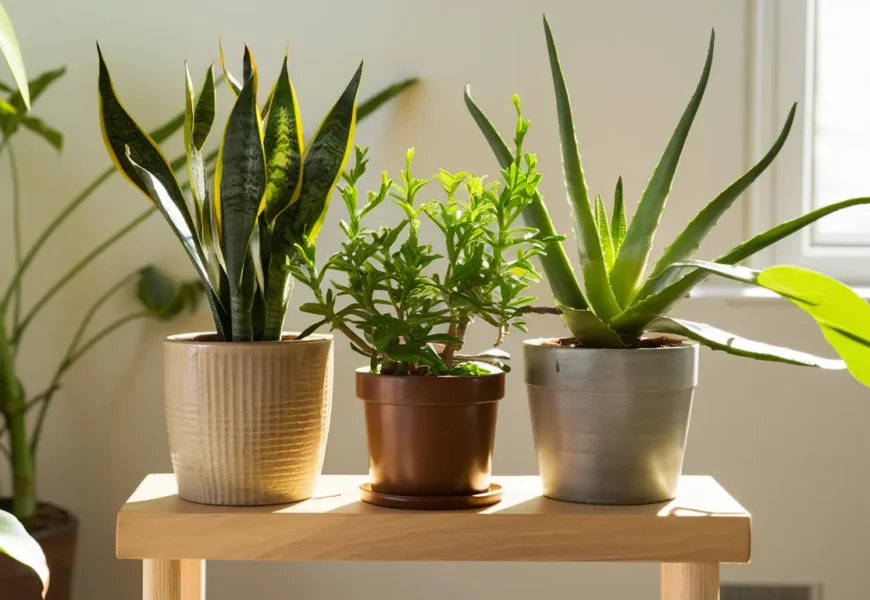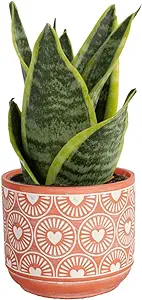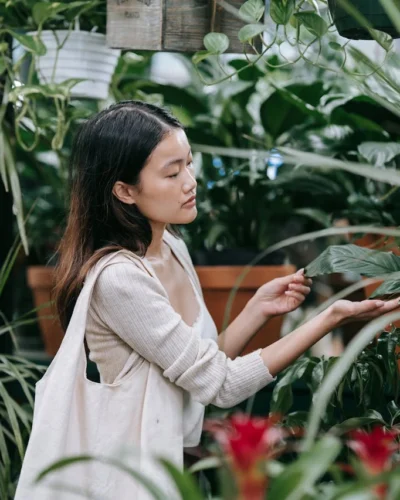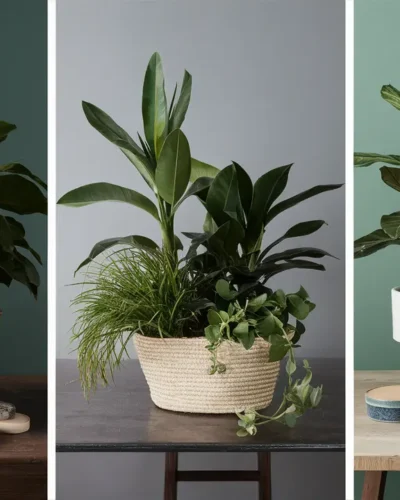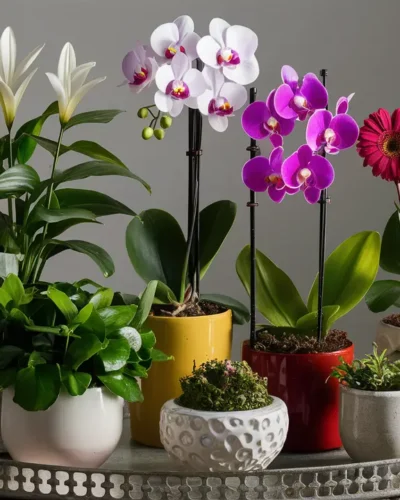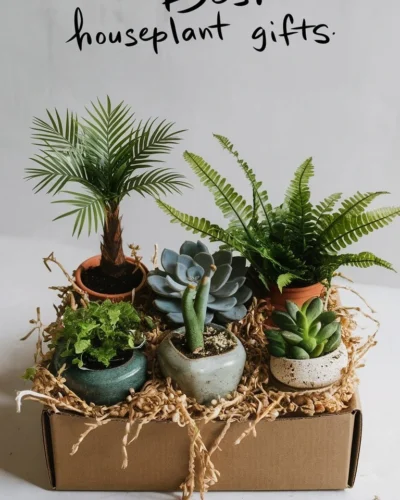Hello again! If you enjoy the idea having indoor jungle in your house or your work place but you find it difficult to maintain plants, you’re in the right place of work. In this post will introduce you to three amazing plants that need more frequent watering than your typical houseplant because they thrive on daily watering.
Table of Content
Introduction
1. The Allure of Low-Maintenance Plants
For people with busy lifestyle, low-maintenance plants are a blessing. These plants are ideal for anyone who wants to enjoy the beauty of nature without the hassle of constant care because they are known to survive and even thrive in non ideal conditions.
2. Daily Watering Concept
Perhaps you’re wondering what we really mean when we say “daily drinks.” Basically, these are the plants that require more frequent watering than other types.
Although the majority of houseplants require weekly watering, some plants benefit from daily watering. You won’t be forced to stick to your watering can all the time if you water your plants every day, so don’t worry.
It simply means that, like feeding your pet or watering your garden, you’ll need to add watering to your daily schedule.
3. Overview of the Three Plants
Let’s now have a quick look at the three low-maintenance plants that this article will cover:
- Snake Plant (Sansevieria): The snake plant is a popular indoor plant because of its eye-catching upright leaves and air-purifying properties.
- Plant ZZ (Zamioculcas zamiifolia): This plant is a favorite of both novice and expert gardeners due to its glossy, dark green leaves and capacity to flourish in low light.
- Aloe Vera: Known for its calming gel, aloe vera is also a low-maintenance plant that gives any area a hint of the tropics.
With a better understanding of what lies ahead, let’s explore the fascinating realm of these low-maintenance beauties!
1. Snake Plant
Characteristics and Appearance
Snake plant is the most elegant houseplant, also known scientifically as Sansevieria. The name comes from the plant’s long, upright leaves, which imitate the shape of a snake.
Snake plants come in a variety of greens, some with variegated patterns, adding visual interest to any room.

Ideal Growing Conditions
The fact that snake plants can grow in a variety of environments is one of the factors contributing to their popularity. The snake plant is tolerant of varying lighting conditions and will happily grow in either type of lighting.
Snake plants are a great option for forgetful or busy plant owners because they can also tolerate periods of drought and neglect.
Benefits of Daily Watering for Snake Plants
Apart from their reputation for withstanding drought, snake plants really enjoy routine irrigation. Providing water to your snake plant on a daily basis helps to maintain the soil at a consistent moisture level, which encourages healthy growth and keeps the plant from getting too dry.
You must be careful not to overwater your snake plant, though, as this can cause root rot. Rather, try to water it only enough to maintain a light moisture level in the soil.
Tips for Caring for Snake Plants
Snake plant care is pretty simple, even for beginners. In addition to regular watering, snake plants appreciate well-draining soil and periodic fertilization during the growing season.
They also prefer to be lightly potted, so there’s no need to rush to repot them in larger containers. Finally, keep an eye out for signs of pests or disease, but be aware that snake plants are relatively pest-resistant compared to other houseplants.
With its striking appearance and low-maintenance nature, the snake plant is an essential part of any houseplant or indoor garden. So feel free to give your snake plant a drink every day, and watch it thrive in return!
2. ZZ Plant
The notable adaptability of the ZZ plant to various environmental conditions is truly remarkable.

Characteristics and Appearance
This is why the plant is so long-lived:
Low Light Tolerance
The ZZ plant can tolerate low light levels, which makes it ideal for offices with few artificial light or rooms natural light.
It is a great option for people who are busy as well as have about suitable growth conditions because of its versatility.
Drought Tolerance
The ZZ plant’s resilience to dry spells is yet another noteworthy quality. The ZZ plant can go for extended periods of time without watering without exhibiting symptoms of distress, in compared to many other houseplants that need to be watered frequently.
For this, it’s the perfect option for busy or forgetful plant owners who might not have time to give their plants regular watering.
Why Watering ZZ Plants Every Day Is Effective?
Even though ZZ plants can withstand droughts, frequent watering is still beneficial to them. The following explains why ZZ plants benefit from daily watering:
- Encourages Healthy Development: Watering your ZZ plant every day keeps the soil consistently moist, which encourages healthy development and keeps the plant from getting too dry. This guarantees that your ZZ plant will always be bright and lush.
- Prevents Soil Texture Damage: Watering your ZZ plant every day keeps the soil from becoming compacted and ensures that the roots have access to nutrients and oxygen. This is necessary to keep your plant healthy and vibrant overall.
Tips for ZZ Plants Care
A ZZ plant requires very little work and is very easy to care for. The following information will help your ZZ plant thrive:
- Well-Draining Soil: ZZ plants tend to favour soil that lets extra water escape freely and drains away. To guarantee ideal drainage and avoid soggy soil, use potting mix designed especially for succulent plants.
- Fertilization Occasional: Although ZZ plants require little care, fertilization on occasion can be beneficial to them in the growing season. To give your ZZ plant the vital nutrients it needs, use a balanced liquid fertilizer diluted to half strength every two to three months.
- Pest Resistance: ZZ plants are a great option for people looking for hassle-free houseplants because of their relative pest resistance. Nevertheless, it’s crucial to routinely check your plant for indications of pests like mealybugs or spider mites, and to take quick action to eradicate any infections.
The ZZ plant is an indispensable addition to any collection of indoor plants because of its gorgeous leaves and extraordinary adaptability. So go ahead, water your ZZ plant every day and take pleasure of this natural beauty!
3. Aloe Vera
Aloe Vera is valued for its many therapeutic benefits in addition to its aesthetic qualities. What you should know about this versatile plant is as follows:
- Aloe Vera is distinguished by its rosette-shaped leaves, which are fleshy and thick. A gel-like substance found in the leaves, which have serrated edges, is often used in skincare products and as a remedy for minor burns and irritations.
- Aloe Vera has been used medicinally for centuries due to its healing properties. Antioxidants, vitamins, and minerals contained in the gel inside the leaves have the ability to calm and moisturize skin, accelerate the healing of wounds, and lessen inflammation. Aloe Vera gel is frequently used to soothe minor skin irritations such as cuts and sunburns.

Watering Needs and Watering Frequency for Aloe Vera
Even though aloe vera is renowned for its capacity to retain water in its leaves, regular irrigation is still necessary for it to flourish. The following information will help you with watering your aloe vera plant:
- Watering Moderately: Aloe Vera plants do best with moderate irrigation, letting the soil dry out in between applications. It is absolutely vital to allow the soil to dry out slightly before rewetting to prevent root rot and other problems caused by overwatering.
- Watering Frequency: During the growing season, you might need to water your Aloe Vera plant every two to three weeks, depending on variables like temperature, humidity, and pot size. You can water the plant once a month or less during the winter months when it is dormant.
Essential Care Tips for Aloe Vera Plants
Although taking care of an Aloe Vera plant is not too difficult, there are a few important things to remember:
Aloe Vera plants thrive in well-draining soil that lets excess water run off without restriction. To prevent wet soil, use a cactus or succulent potting mix and make sure the drainage is ideal.
Bright Indirect Light: Bright, indirect light is ideal for Aloe Vera plants. Your plant will benefit from plenty of sunlight without being exposed to direct sunlight, which can lead to sunburn, if you place it next to a south or west facing window.
Steer clear of overwatering: One of the most frequent problems Aloe Vera plants encounter is overwatering. In between waterings, let the soil dry out and only water when the top inch of soil is completely dry to the touch.
Why Incorporate Daily Watering into Plant Care Routines?
Daily watering doesn’t have to be a big hassle, even though it may initially seem like a difficult task. Including watering in your everyday routine can help you stay in touch with nature and take care of your plants, which can be a calming and joyful activity.
Regular moisture will reward you with lush foliage, colourful blooms, and a healthier indoor environment for your low-maintenance plants. Observing your plants flourish and grow will also make you happy and fulfilled in life.
Conclusion
Congratulations! You’ve now been introduced to three incredible low-maintenance plants that thrive on daily drinks.
Low-maintenance plants are living, breathing creatures with the capacity to change your house and enhance your wellbeing. They are more than just ornamental accents. Adding low-maintenance plants to your indoor spaces is an easy and efficient way to bring the beauty of nature inside, regardless of your level of gardening experience.
So go ahead and give up on the watering can and enjoy having drinks every day with these amazing low-maintenance plants. Your home, health and mood will express their gratitude to you!
Liven up your home with the nearly indestructible Snake Plant!
This beauty is easy to care for, purifies your air, and comes in a decorative pot. Perfect for busy lives or anyone who struggles with plants!
FAQ
- What are the benefits of low-maintenance plants?
- Low-maintenance plants are perfect for busy individuals or those lacking a green thumb. They require minimal care and can thrive in less-than-ideal conditions.
- What is the concept of “daily drinks” for plants?
- “Daily drinks” refer to plants that benefit from more frequent watering than others. While most houseplants only need to be watered once or twice a week, these plants thrive when given a daily dose of water.
- Which plants thrive on daily drinks?
- Three low-maintenance plants that thrive on daily drinks are the Snake Plant (Sansevieria), ZZ Plant (Zamioculcas zamiifolia), and Aloe Vera.
- How do I care for a Snake Plant?
- Snake Plants prefer bright, indirect light and well-draining soil. Water them moderately, allowing the soil to dry out between waterings, and avoid overwatering to prevent root rot.
- What are the characteristics of a ZZ Plant?
- ZZ Plants have glossy, dark green leaves that grow in an arching pattern. They are highly adaptable to different light and moisture levels and can thrive in low light conditions.
- How often should I water a ZZ Plant?
- ZZ Plants prefer to be watered moderately, allowing the soil to dry out between waterings. Depending on environmental factors, you may need to water them every 2-3 weeks during the growing season.
- What are the medicinal benefits of Aloe Vera?
- Aloe Vera has soothing and healing properties for the skin. The gel inside its leaves contains antioxidants, vitamins, and minerals that can soothe sunburns, cuts, and other minor skin irritations.
Disclosure:
This post may contain affiliate links. This means if you click on a link and make a purchase, Sproutfolk may receive a small commission at no additional cost to you. We only recommend products we believe in and that may be helpful to our readers.

